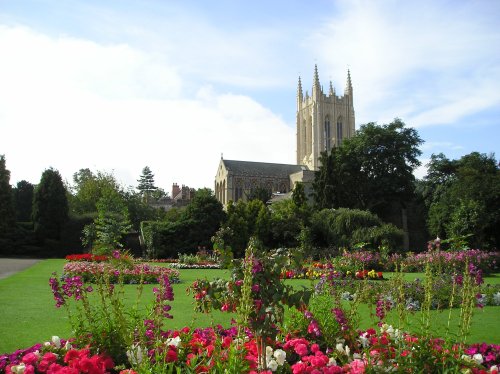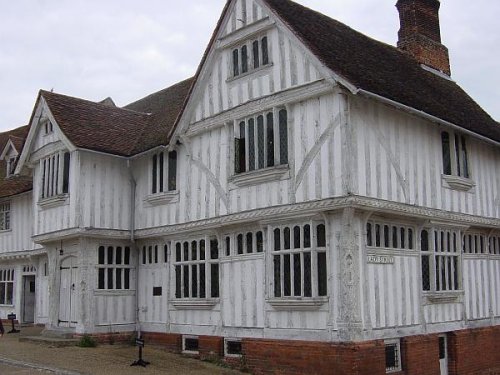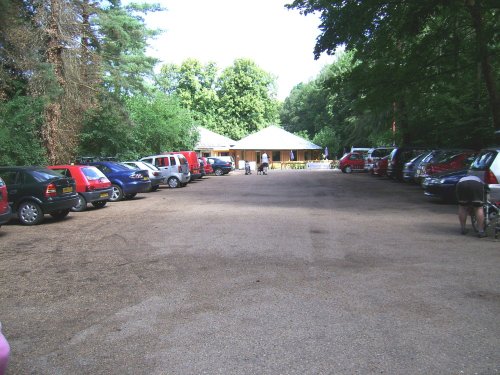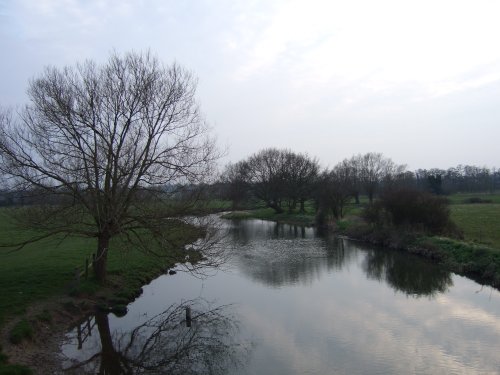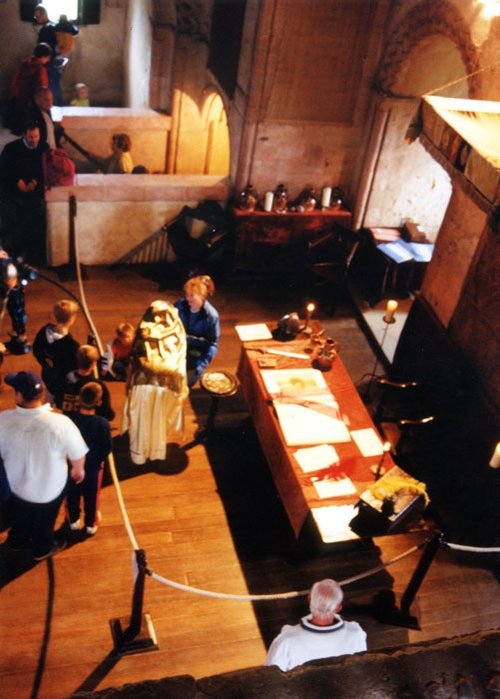Pictures of Bury St Edmunds
About Bury St Edmunds
The body of Edmund, King of East Anglia was brought here for burial 33 years after his murder by the Danes in AD870, it was to be his final resting place. It is also the birthplace of the Magna-Carta, King John's barons met in secret here to honour St.Edmund's day. At the meeting, it is said they swore on the high alter of the abbey church to force the king's signature on the Magna Carter - thus the town lay claim to being the 'Cradle of the Law'.
Bury St.Edmunds is laid out in accordance with the old medieval formula of a square for god and a square for man. The main square is just outside the great abbey and is known as Angel Hill. For almost a thousand years the site of the Church of St.James, Suffolk's Cathedral has been one of pilgrimage. It was the death of King Edmund that led to the building of the Norman Abbey, which eventually became one of the richest monasteries in England. The power of the abbots was absolute, they ruled over the lives of the townspeople, often clashing with them.
The lovely buildings and church we see today, still retains early work with notable alterations of the 18th and 19th-centuries. The most recent alterations include a central lantern tower rising above the high alter to dominate the Suffolk skyline. This was one of the countries Millennium projects, the Thanksgiving service, celebrating the completion of the tower was attended this year by the Prince of Wales and his new wife the Duchess of Cornwall. The cathedral possess a wealth of history, it has magnificent architecture and wonderful treasures that are a constant source of fascination and amazement. It is a serene house of god, that is quite simply overwhelming.
Situated amid the charm of Angel Hill is the elegant Georgian Angel Hotel, a magnificent foliage clad building, dating from around 1452. Charles Dickens is believed to have stayed here, the hotel is mentioned in his Pickwick Papers and the bar is named after Pickwick. Also on Angel Hill, standing next to the Abbey Gateway you can see "The Pillar of Salt" a unique deco-style milestone of 1935 giving directions to London and Norwich and other local towns. The sign is illuminated from within and is now a listed building. The abbey gardens are of note and the nearby church dedicated to St.Mary dates back to the 12th-century. This beautiful church is renowned for its magnificent hammer-beam Angel roof, wonderful wood carving, columns, decorated arches, beautiful stained glass and spectacular monuments. It is the burial place of Mary Tudor, favourite sister of Henry VIII and has the longest aisle of any church in the country.
Bury St.Edmunds has all this and much more. It is a splendid market town with a vibrant atmosphere. Avid shoppers should note the Wednesday and Saturday market days, lovers of historic houses will find Ickworth House at Horringer full of fascination and interest, and nearby for all the family, there is West Stowe Anglo-Saxon Village, a unique reconstruction of an Anglo-Saxon village on the site of an original Anglo-Saxon settlement. There is a number of informative museums, one is dedicated to the famous brewing house, Greene and King, and the historic Georgian Theatre Royal offers superb productions all the year round.
The town has many fine examples of half-timbered houses decorated with raised ornamental plasterwork known as pargetting. This picturesque adornment was first seen in Elizabethan times but slowly went out of fashio after the 17th-century. These properties are famous throughout Suffolk, where some are now listed buildings.
Bury St.Edmunds is an ideal centre for touring all parts of Suffolk. The waters of the Rivers Lark and Linnet flow into the town, and to the west of Bury lie the beginnings of the glorious Fen country.
